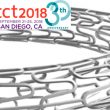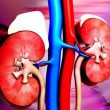This study was aimed at gaining device registration from the US Food and Drug Administration (FDA) for a polymer-free biolimus A9 drug-coated stent (BioFreedom, Biosensors). The study had two purposes: on the one hand, it meant to reproduce the results of the LEADERS FREE trial (published in 2015) in terms of safety and efficacy with<a href="https://solaci.org/en/2018/10/03/tct-2018-leaders-free-ii-polymer-free-des-in-patients-at-high-risk-for-bleeding-with-1-month-of-antiplatelet-therapy/" title="Read more" >...</a>
See the presentations of the 9th José Gabay Fellow Course
We are deeply thankful to all interventional physicians who, motivated by their great scientific and educational vocation, presented their works at the “José Gabay” Course. Read the presentations below: Module I: Fundamentals and Basic Elements. Leiva Pons, José Luis. “Vascular Closure Devices. Step by Step.” (Spanish version) García García, Hector. “Current Status of Coronary Intervention:<a href="https://solaci.org/en/2018/09/14/see-the-presentations-of-the-9th-jose-gabay-fellow-course/" title="Read more" >...</a>
OCT Provides Hints About the Physiopathology Behind Very Late Stent Thrombosis
Neoatherosclerosis was frequently observed in patients who experienced very late stent thrombosis, particularly those with drug-eluting stents. In-stent plaque rupture was the most common cause of thrombosis and it usually occurred in cases in which the original procedure had been carried out while the patient was undergoing an acute myocardial infarction. Macrophage infiltration can be<a href="https://solaci.org/en/2018/09/10/oct-provides-hints-about-the-physiopathology-behind-very-late-stent-thrombosis/" title="Read more" >...</a>
Antiaggregation Time after Treating Bifurcations
Defining dual antiplatelet therapy (DAPT) seems a never-ending story. We go from trials showing the safety of shorter schemes thanks to new generation stents to others suggesting up to two years of DAPT. Rather than finding a general scheme, it seems to be about adjusting DAPT on a case by case basis, according to ischemia<a href="https://solaci.org/en/2018/09/06/antiaggregation-time-after-treating-bifurcations/" title="Read more" >...</a>
The Dangerous Combination of Complex Angioplasty and High Bleeding Risk Seems to Have a Solution
The LEADERS FREE trial demonstrated that a polymer-free Biolimus A9-coated stent (BioFreedom™DCS; Biosensors Europe, Morges, Switzerland) is superior to a conventional stent (bare metal stent, BMS) in patients with high bleeding risk treated with only one month of dual antiplatelet therapy. Now, is this global study outcome applicable in cases of complex lesions with several<a href="https://solaci.org/en/2018/08/21/the-dangerous-combination-of-complex-angioplasty-and-high-bleeding-risk-seems-to-have-a-solution/" title="Read more" >...</a>
Left Main PCI: Despite Auspicious Long-Term Outcomes, Optimal Strategy Still under Discussion
Left main coronary artery bifurcation interventions have shown very good results at long term, especially with new generation DES. The one-stent strategy has seen better results than the two-stent strategy, according to this registry recently published in J Am Coll Cardiol Intv. However, how does this registry of the daily practice between the years 2002 and<a href="https://solaci.org/en/2018/07/17/left-main-pci-despite-auspicious-long-term-outcomes-optimal-strategy-still-under-discussion/" title="Read more" >...</a>
New Ultra-Thin-Strut DES: Do They Outperform Second-Generation DES?
The new drug-eluting stents (DES) equipped with ultra-thin struts are showing a lower risk of target lesion failure as a result of lower rates of acute myocardial infarction and similar rates of revascularization, according to this meta-analysis soon to be published in Circulation. Such a difference is evidenced at a 1-year follow-up when compared with<a href="https://solaci.org/en/2018/07/04/new-ultra-thin-strut-des-do-they-outperform-second-generation-des/" title="Read more" >...</a>
Renal Impairment: How Does It Affect Angioplasty and Surgery?
Courtesy of Dr. Carlos Fava. The incidence of kidney disease is increasing. In its final stage, this pathology is related with coronary disease and increased mortality. Furthermore, we know that, in many occasions, it is associated with diabetes. Nowadays, the evidence comparing the progress of patients with impaired kidney function who have undergone left main<a href="https://solaci.org/en/2018/06/14/renal-impairment-how-does-it-affect-angioplasty-and-surgery/" title="Read more" >...</a>
CTO Revascularization Improves Quality of Life
Courtesy of Dr. Carlos Fava. The presence of CTO hovers around 15, 20% in coronary angiographies of patients with chronic stable angina, but only 5% receive percutaneous coronary intervention (PCI). One of the obstacles to percutaneous revascularization is the lack of relevant studies justifying it, though we do have different comparative studies that improve symptoms, ventricular<a href="https://solaci.org/en/2018/06/08/cto-revascularization-improves-quality-of-life/" title="Read more" >...</a>
EuroPCR 2018 | Ultimaster Registry: Difference in Strut Thickness
This work compared the safety and efficacy of angioplasty with thin-strut (80 µm) sirolimus-eluting stents with a cobalt chromium structure (Ultimaster) vs. thick-strut (120 µm) biolimus-eluting stents with a cobalt chromium structure (Nobori). This study compared two prospective multicenter single-arm registries: e-Ultimaster and NOBORI 2. The Ultimaster Registry included over 37,000 patients in 4 continents, while the NOBORI 2 Registry included<a href="https://solaci.org/en/2018/05/31/europcr-2018-ultimaster-registry-difference-in-strut-thickness/" title="Read more" >...</a>









